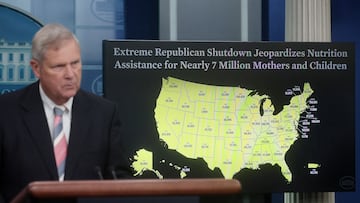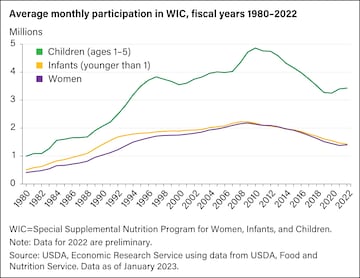POLITICS | FINANCIAL ASSISTANCE
Would the government shutdown impact SNAP benefits?
Millions of Americans risk seeing nutrition support dry up were there an extended government shutdown. Mothers and their children would feel it much sooner.

The nation is on the precipice of a government shutdown yet once again. Every year the US Congress, who hold the purse strings of the country’s finances, must approve 12 appropriation bills to fund the government’s operations and programs.
One of those is the Agriculture Appropriations Bill which covers among other things, spending on two nutritional food assistance programs. They are the Supplemental Nutrition Assistance Program (SNAP) and the Special Supplemental Nutrition Program for Women, Infants, and Children (WIC).
While SNAP funding will go out as normal in October, an extended government shutdown could see later benefits affected. Participants in WIC would see benefits cut within days, according to Agriculture Secretary Tom Vilsack.
Would the government shutdown impact SNAP benefits?
SNAP provides financial assistance to low-income families for the purchase of certain nutritional foods. During the 2018-2019 government shutdown, the longest ever lasting 35 days, that began on 22 December 2018 the US Agriculture Department (USDA) was able to use a provision in a stopgap bill to extend SNAP payments through February 2019.
A provision allowed federal agencies to make obligated payments to support certain programs for 30 days after the stopgap bill expired. The benefits were sent out 20 January, five days before the shutdown ended. However, the agency would not have been able to make payments the following month, for March, had the shutdown continued past the payment date for that month.
This time around, there may not be that option with no stopgap bill containing such a provision, as well as resistance from a handful of Republicans in both chambers to pass such a measure, thus putting November benefits at risk were this shutdown to drag out through the end of October. Over 40 million people participated in SNAP as of June 2023 according to the most recent data. That’s roughly 12.5 percent of the total US population.
A shutdown would create an immediate problem for authorized vendors whose Electronic Benefit Transfer (EBT) card licenses that expire. They would not be able to renew those licenses while it lasted, thus preventing them from accepting SNAP benefits as payment for permissible goods.

Benefits cut within days for the “vast majority” of the 7 million participants in WIC
WIC, a science-based program to address nutritional and health issues, provides healthcare services and nutrition to low-income pregnant women, breastfeeding women and children under the age of 5. According to Secretary Vilsack the “vast majority” of the 7 million participants would see cuts within days of a shutdown.
Nearly forty percent of US newborns rely on WIC, according to the USDA. Vilsack warned that a shutdown would have “real consequences to real people in a real way.” The secretary called the GOP fiscal plans “punitive” and “petty.”






